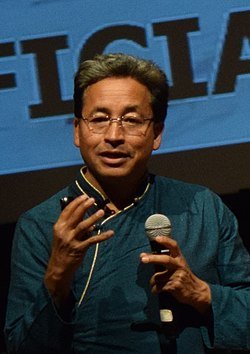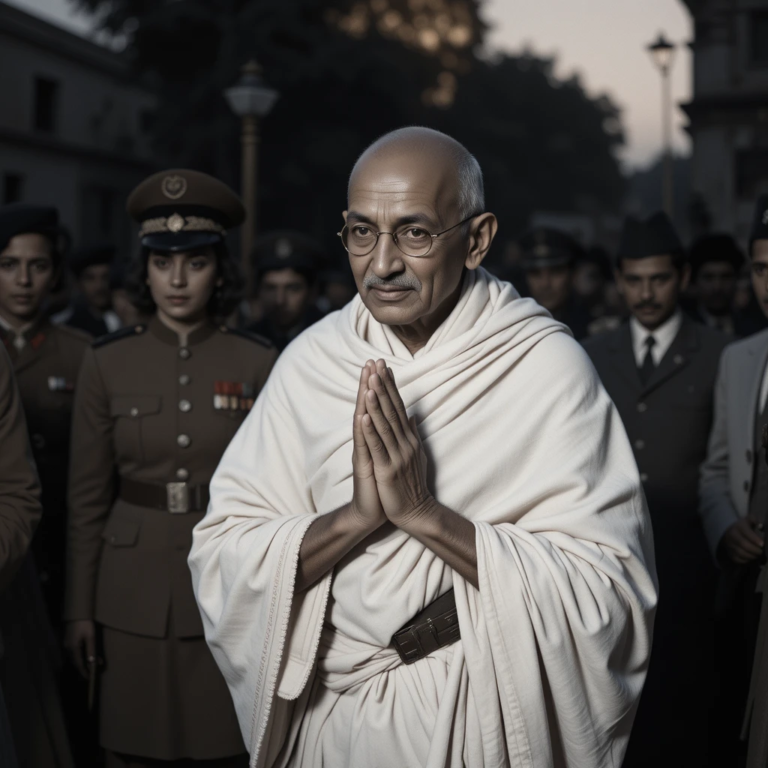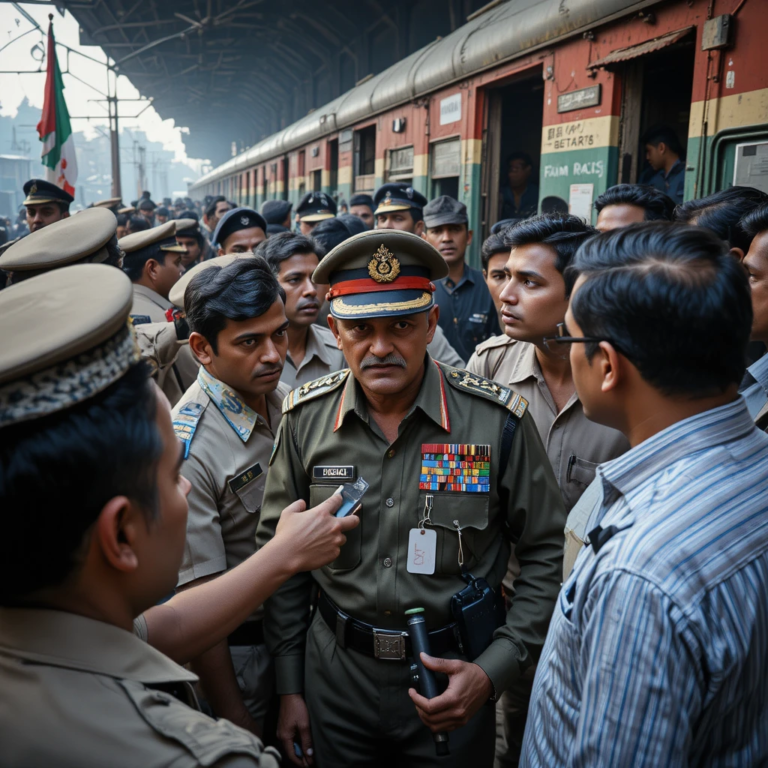Introduction
The framework for Citizens of India is enshrined in Part II of the Constitution of India, encompassing Articles 5 to 11, which came into operation on January 26, 1950. These provisions were crafted to navigate the complexities arising from India’s independence in 1947 and the subsequent partition into India and Pakistan, addressing issues of migration, birth, descent, residence, and allegiance. The Constitution provided a foundational definition of citizenship at its commencement, while empowering Parliament under Article 11 to legislate on ongoing matters of acquisition, termination, and regulation. This led to the enactment of the Citizenship Act, 1955 (Act No. 57 of 1955), which operationalized these principles and introduced detailed modes for post-1950 citizenship.

Table of Contents
Till 1992, the citizenship regime underwent several amendments to the 1955 Act, reflecting evolving socio-political contexts such as mass migrations, gender equality concerns, and regional agitations like the Assam Movement. Key amendments included those in 1957 (minor procedural changes), 1960 (addressing territorial incorporations), 1985 (introducing Section 6A for special provisions in Assam post the 1985 Assam Accord), 1986 (restricting citizenship by birth effective July 1, 1987, to require at least one Indian parent, amid concerns over illegal immigration), and 1992 (making citizenship by descent gender-neutral and adjusting rules for minors’ relinquishment). These changes transitioned India from a predominantly jus soli (right of soil) system toward incorporating jus sanguinis (right of blood) elements, while maintaining prohibitions on dual citizenship under Article 9 and Section 9 of the Act.
This expanded article delves into the constitutional provisions, the 1955 Act and its amendments till 1992, modes of citizenship acquisition, and procedural aspects, with a focused examination of citizenship through marriage for foreign women. It also includes a detailed case study on Sonia Gandhi’s citizenship acquisition, highlighting timelines, processes, and controversies, drawing from historical records and legal interpretations. References to articles, acts, and amendments are integrated throughout.
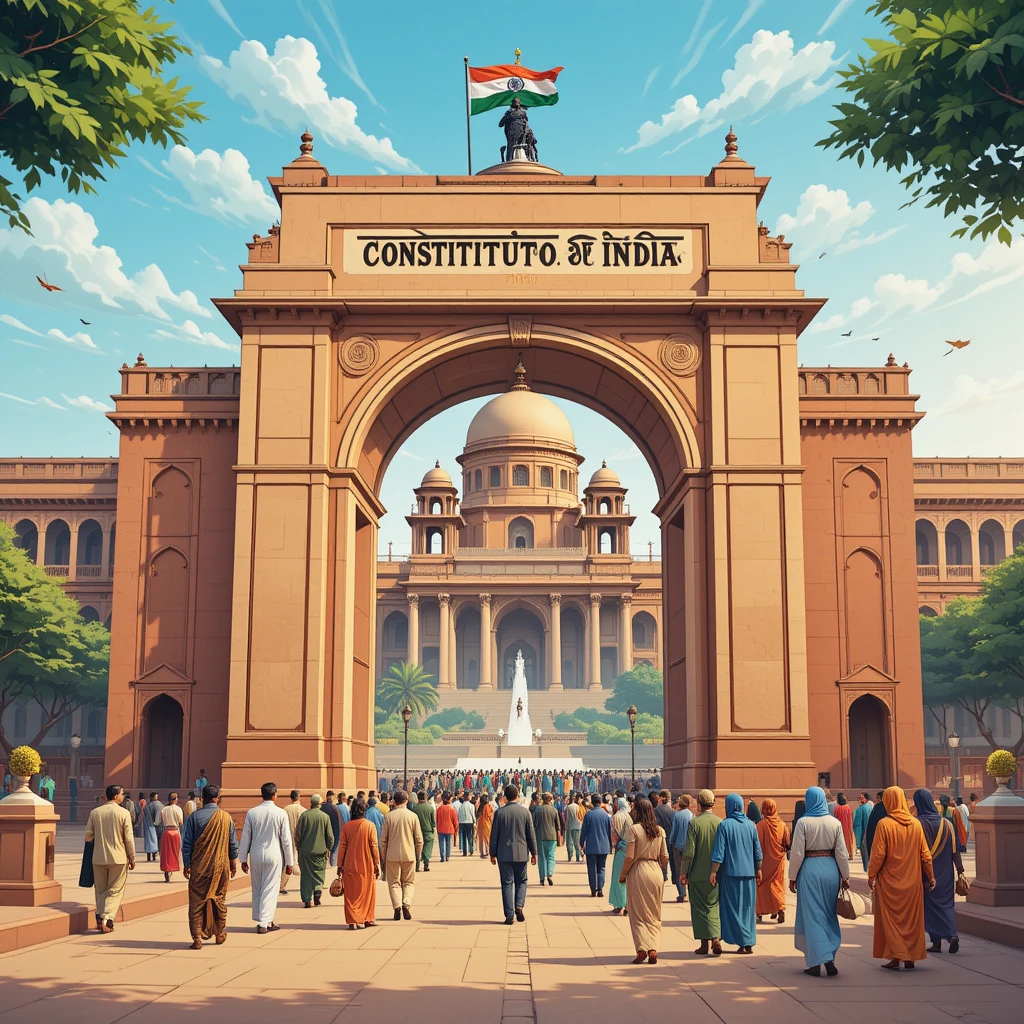
Citizenship at the Commencement of the Constitution (Articles 5–9)
The Constitution retroactively determined citizenship as of January 26, 1950, to include individuals with established ties to the newly independent nation, while accounting for the partition’s disruptions.
Article 5: Citizenship by Domicile, Birth, or Residence
Every person domiciled in India and satisfying one of the following was deemed a citizen: (a) born in India; (b) having at least one parent born in India; or (c) ordinarily resident in India for at least five years immediately preceding January 26, 1950. “Domicile” required not just physical presence but an intention to make India one’s permanent home, as interpreted in landmark cases like Central Bank of India v. Ram Narain (1955).
Article 6: Citizenship for Migrants from Pakistan
This addressed Hindu, Sikh, and other refugees fleeing Pakistan. A person migrating before July 19, 1948, was a citizen if they or their ancestors were born in undivided India (per the Government of India Act, 1935) and had resided in India since migration. For post-July 19, 1948 migrations, registration with a designated officer and at least six months’ prior residence were mandatory.
Article 7: Citizenship for Persons Who Migrated to Pakistan but Returned
Individuals who migrated to Pakistan after March 1, 1947, were not citizens unless they returned under a resettlement or permanent return permit issued by authorities. Such returnees were then treated under Article 6 provisions, emphasizing documented intent to reintegrate.
Article 8: Citizenship for Persons of Indian Origin Residing Outside India
Persons residing abroad, if they or their parents/grandparents were born in undivided India, could acquire citizenship by registration with Indian diplomatic or consular representatives. This facilitated the Indian diaspora’s connection, requiring applications in prescribed forms before or after 1950.

Article 9: Bar on Dual Citizenship
No person could claim citizenship under Articles 5, 6, or 8 if they had voluntarily acquired foreign citizenship. This enshrined single citizenship, though Commonwealth citizenship was initially not deemed “foreign” until clarified in later jurisprudence. Court cases like State of U.P. v. Shah Mohammad (1969) reinforced that voluntary acquisition implies conscious choice, not automatic loss.
These articles collectively granted citizenship to over 350 million people in 1950, prioritizing inclusivity for partition-affected populations while excluding those with foreign allegiances.
Continuance and Regulation of Citizenship (Articles 10–11)
Article 10: Continuance of Citizenship Rights
Citizens under Articles 5–9 retained their status, subject only to laws enacted by Parliament, ensuring stability while allowing legislative flexibility.
Article 11: Parliamentary Power to Regulate Citizenship
Parliament was granted exclusive authority to make laws on citizenship matters, superseding but not derogating from constitutional provisions. This paved the way for the Citizenship Act, 1955, and its subsequent amendments.

The Citizenship Act, 1955, and Amendments Till 1992
Enacted on December 30, 1955, the Act detailed five primary modes of acquiring citizenship post-1950, with amendments refining these in response to demographic shifts and legal challenges. By 1992, amendments had addressed gender biases, immigration concerns, and territorial integrations.
Citizenship by Birth (Section 3)
From January 26, 1950, to June 30, 1987, every person born in India was a citizen by birth, excluding children of foreign diplomats or enemy aliens. The 1986 Amendment (Citizenship (Amendment) Act, 1986) altered this effective July 1, 1987, requiring at least one parent to be an Indian citizen (or not an illegal migrant post-1987), responding to influxes from Bangladesh and other neighbors. This shift was upheld in cases like Abdul Sattar v. State of Gujarat (1964), emphasizing territorial birth with exceptions.
Citizenship by Descent (Section 4)
Persons born outside India after January 26, 1950, acquired citizenship if their father was an Indian citizen at birth (paternal focus till 1992). Registration at an Indian consulate within one year (extendable) was required. The 1992 Amendment (Citizenship (Amendment) Act, 1992) made this gender-neutral for births after December 10, 1992, allowing either parent to confer citizenship, and introduced provisos for registration if the parent was a citizen by descent. This addressed discriminatory aspects, aligning with evolving equality norms under Article 14 of the Constitution.
Citizenship by Registration (Section 5)
This mode allowed certain categories to register after meeting residency and other criteria. Till 1992, it included: (a) persons of Indian origin resident in India for six months; (b) persons of Indian origin abroad; (c) foreign women married to Indian citizens (gender-specific till 1992); (d) minor children of citizens; and (e) Commonwealth citizens. Amendments in 1957 and 1960 clarified procedural aspects, such as forms and authorities. The 1992 Amendment extended gender neutrality to marriage-based registration, allowing foreign spouses of Indian women to apply similarly.
Citizenship by Naturalization (Section 6)
Foreigners (non-Commonwealth) could naturalize after 10-12 years’ residence (per Third Schedule), demonstrating good character, proficiency in a scheduled language, and renunciation of prior citizenship. Commonwealth citizens faced similar but slightly relaxed requirements under Section 5(1)(e). The process involved applications to the Central Government, with discretion for waivers in cases of distinguished service. Court oversight, as in Mohamed Ayub Khan v. Commissioner of Police (1965), ensured non-arbitrary decisions.
Citizenship by Incorporation of Territory (Section 7)
Upon acquisition of new territories (e.g., Goa in 1961, Sikkim in 1975), residents automatically became citizens unless they opted out within a specified period. The 1960 Amendment facilitated such integrations by empowering notifications.
Special Provisions for Assam (Section 6A, Inserted by 1985 Amendment)
Enacted via the Citizenship (Amendment) Act, 1985, following the Assam Accord, this section regularized migrants: those entering before January 1, 1966, were deemed citizens; between 1966 and March 24, 1971, they could register but faced a 10-year disenfranchisement; post-1971 entrants were illegal and subject to deportation under the Illegal Migrants (Determination by Tribunals) Act, 1983 (later struck down in 2005). This addressed anti-foreigner agitations in Assam.
Termination and Relinquishment (Sections 8–10)
Citizenship could be terminated by renunciation (Section 8), automatic termination upon acquiring foreign citizenship (Section 9), or deprivation for fraud/disloyalty (Section 10). The 1992 Amendment made relinquishment for minors conditional on both parents’ actions, promoting child welfare.
Citizenship Through Marriage: Foreign Women Married to Indian Men (Section 5(1)(c))
Till the 1992 Amendment, Section 5(1)(c) allowed foreign women married to Indian male citizens to acquire citizenship by registration after five years’ ordinary residence in India. This provision reflected patriarchal norms, as foreign men marrying Indian women were limited to naturalization under Section 6. “Ordinary residence” implied continuous living with intent to settle, excluding brief absences, as clarified in Union of India v. Shamsher Singh (1985). The 1992 Amendment introduced gender neutrality, extending the provision to foreign spouses of Indian citizens regardless of gender, effective for applications post-December 10, 1992.
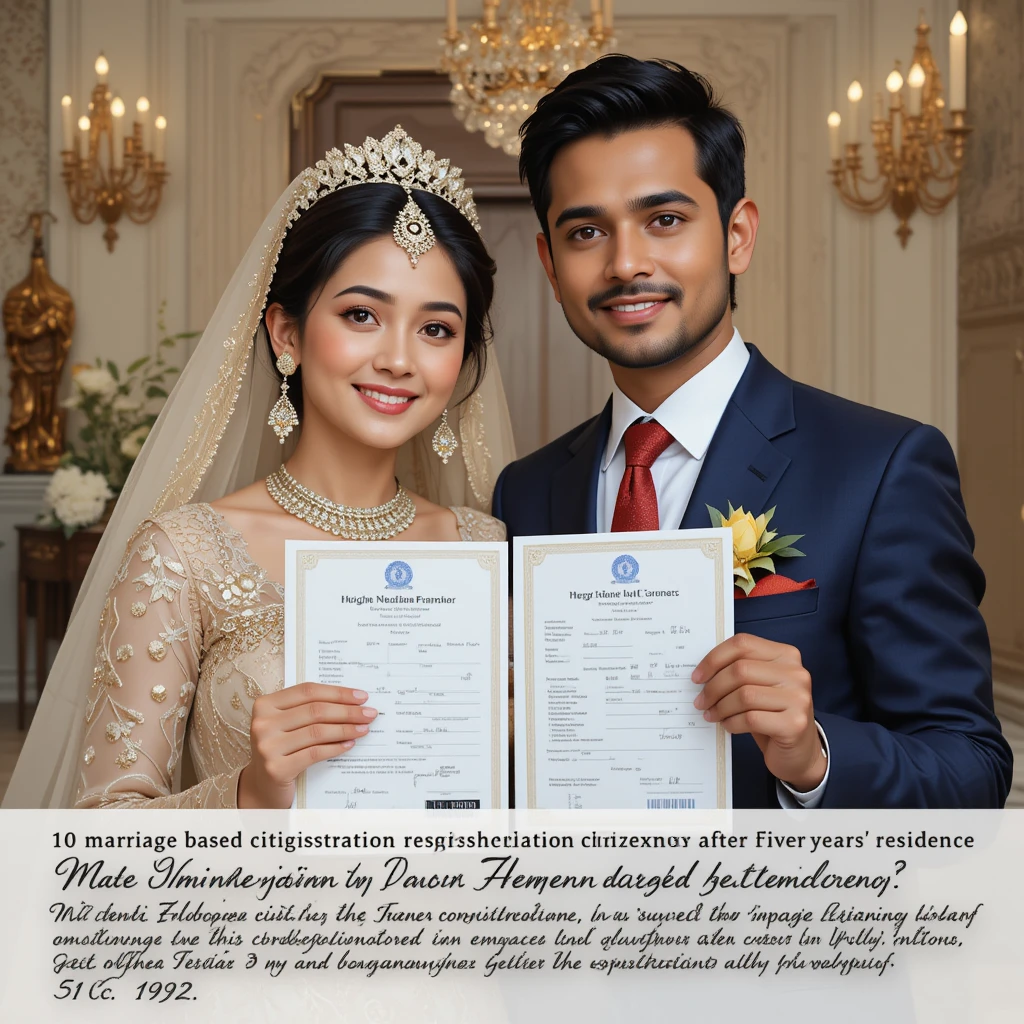
Court cases till 1992 highlighted procedural rigor. In Sharafat Ali Khan v. State of U.P. (1961), the Supreme Court emphasized valid marriage proof and residency verification. Discretions were challenged in cases like State of Andhra Pradesh v. Abdul Khader (1961), where arbitrary rejections were overturned if conditions were met.
Steps Taken by the Individual and Government for Citizenship
The process, governed by the Citizenship Rules, 1956 (amended periodically till 1992), involved:
- Establish Residency: The applicant must reside ordinarily in India for five continuous years immediately preceding the application, evidenced by documents like rent agreements, utility bills, or employer certificates.
- Application Submission: File Form III with the District Collector (or Indian consulate if abroad, though residency typically required India-based). Required documents included: marriage certificate (validated under the Special Marriage Act, 1954, if applicable), proof of husband’s Indian citizenship (e.g., passport, birth certificate), residency evidence, character certificates, and a declaration of intent to renounce foreign citizenship if dual nationality was prohibited by the home country. A nominal fee (Rs. 20–50 till the 1980s) applied.
- Government Processing and Verification: The Collector forwards the application to the Ministry of Home Affairs (MHA) for scrutiny. This entailed police verification reports (PVR) on character, loyalty, and potential security risks, often involving local intelligence units. The MHA could request additional documents or interviews. Rejections were possible for invalid marriages, insufficient residency, or adverse reports, with appeals to higher courts under Article 226.
- Oath of Allegiance: Upon approval, the applicant swears or affirms allegiance to the Constitution per the Second Schedule: “I… do solemnly affirm that I will bear true faith and allegiance to the Constitution of India as by law established and that I will faithfully observe the laws of India and fulfil my duties as a citizen of India.”
- Registration and Certification: The MHA registers the applicant and issues a citizenship certificate under Section 5(5). Citizenship commences from the date of registration, granting full rights including passport issuance.
This process typically spanned 6–18 months till 1992, with delays due to bureaucratic verifications. Post-acquisition, individuals could apply for a passport and other identity documents.
Becoming a Voter After Acquiring Citizenship
Voter enrollment was regulated by the Representation of the People Act, 1950 and 1951. Till the 61st Amendment in 1989 (effective March 28, 1989), voters needed to be citizens aged 21 or above; post-1989, the age was lowered to 18. Ordinary residence in a constituency for at least six months was required, per Section 19.
Steps for Voter Registration
- Eligibility Verification: Confirm citizenship (via certificate), age (birth certificate or affidavit), and residency (e.g., ration card).
- Application: Submit Form 6 to the Electoral Registration Officer (ERO), attaching proofs. Till 1992, manual submissions were common, with revisions during annual summaries (qualifying date: January 1).
- Government Scrutiny: The ERO conducts inquiries via Booth Level Officers, allowing public objections within seven days.
- Enrollment and Voter ID: Approved names are added to electoral rolls. Voter ID cards were introduced in the 1970s but became widespread post-1993; till then, inclusion in rolls sufficed for voting.
Disqualifications included non-citizenship, unsound mind, or criminal convictions. Violations, like premature enrollment, could lead to penalties under Section 31.
Case Study: Sonia Gandhi’s Acquisition of Indian Citizenship and Voter Status
Sonia Gandhi (née Edvige Antonia Albina Maino), born December 9, 1946, in Lusiana, Italy, to a Roman Catholic family, studied English in Cambridge, England, where she met Rajiv Gandhi in 1965. They married on February 25, 1968, in a Hindu ceremony in New Delhi, and she moved to India, residing with the Gandhi family. Initially holding Italian citizenship, she lived as a foreign national, avoiding public life during Indira Gandhi’s premiership and Rajiv’s political rise.
Timeline and Process of Citizenship Acquisition
- 1968–1983: Sonia resided in India for over 15 years, satisfying the five-year residency under Section 5(1)(c). She did not apply immediately, reportedly due to personal reluctance amid political turbulence, including the Emergency (1975–1977) and family tragedies.
- April 27, 1983: Surrendered her Italian passport to the Italian Embassy in New Delhi. Italian law till August 16, 1992 (Law No. 91/1992), prohibited dual citizenship, so this act effectively renounced her Italian nationality upon acquiring Indian citizenship.
- April 30, 1983: Acquired Indian citizenship by registration under Section 5(1)(c). The process involved submitting Form III to the relevant authority (likely the Delhi Collector), providing marriage proof (1968 certificate), Rajiv’s citizenship evidence, residency documents (from 1968), and character affidavits. MHA verification confirmed no security issues, leading to approval, oath-taking, and certificate issuance. Citizenship was effective from April 30, 1983.
This aligned with standard procedures, with no reported deviations. Post-acquisition, she obtained an Indian passport and integrated fully into Indian society.
Voter Status and Controversies
Post-citizenship, Sonia became eligible to vote. However, controversies emerged regarding her pre-1983 voter enrollment:
- 1980 Voter List Allegation: BJP leaders, including Subramanian Swamy and Amit Malviya, alleged her name appeared in the New Delhi constituency’s electoral roll in 1980 (serial no. 388, polling station 145) and 1982, while still an Italian citizen. This would violate Section 19 of the Representation of the People Act, 1951, requiring citizenship for enrollment. Documents purportedly from the Election Commission were cited, but Congress dismissed them as forgeries or errors, attributing to clerical mistakes in family listings.
- Political Ramifications Till 1992: During Rajiv’s premiership (1984–1989), her foreign origin was occasionally raised by opposition, but no formal challenges occurred till 1992. In 1991, after Rajiv’s assassination, she declined Congress leadership, but her citizenship was not contested in courts during this period.
- Later Developments (Post-1992 Context): The issue resurfaced in 1999 when Sharad Pawar and others questioned her eligibility for Prime Ministership due to foreign birth, leading to their expulsion from Congress. The Supreme Court, in Dr. Ramesh Yashwant Prabhoo v. Prabhakar Kashinath Kunte (1996) and later petitions like Hari Shanker Jain v. Sonia Gandhi (2001), affirmed her citizenship and electoral rights, dismissing origin-based bars under Article 84. In Rakesh Singh v. Sonia Gandhi (2011, Allahabad High Court), allegations of misrepresentation were rejected. Recent revivals in 2025 by BJP, amid voter fraud debates, reference the 1980 list but lack new evidence impacting her historical status.
These controversies underscore the politicization of citizenship, particularly for high-profile figures, but legal validations confirmed her status as a citizen by registration since 1983.
Implications and Court Interpretations Till 1992
Till 1992, Supreme Court rulings shaped citizenship enforcement. In Izhar Ahmad Khan v. Union of India (1962), the Court upheld Parliament’s plenary powers under Article 11, validating the 1955 Act. Cases like State of Madhya Pradesh v. Peer Mohd (1963) clarified “voluntary acquisition” under Section 9, requiring intent, not mere possession of foreign documents. For marriage-based citizenship, courts emphasized bona fide unions, as in Govt. of A.P. v. Syed Mohd. Khan (1962).
The regime balanced humanitarian inclusions with sovereignty, but amendments reflected growing anti-immigration sentiments. By 1992, over 10 million had acquired citizenship through various modes, fostering India’s diverse polity.
Conclusion
India’s citizenship laws till 1992 evolved from the Constitution’s foundational inclusivity to a more regulated framework via the 1955 Act and amendments, addressing partition legacies, gender disparities, and regional concerns. Provisions like marriage-based registration facilitated family unity, as exemplified by Sonia Gandhi’s case, though not without political controversies. This era laid the groundwork for subsequent reforms, emphasizing citizenship as a blend of rights, duties, and national identity.

